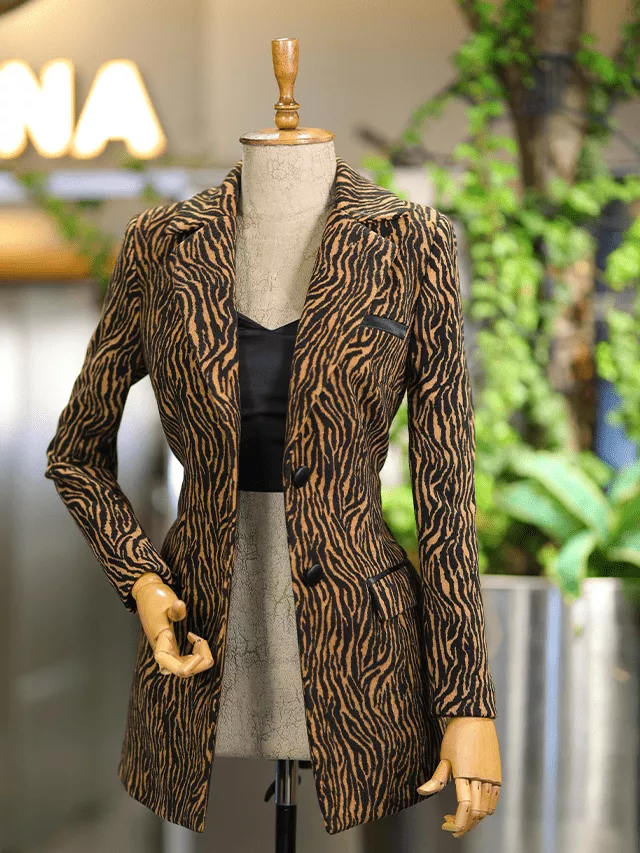Last Updated on August 12, 2025
You’ve decided to take the big step towards opening your boutique. But now you wonder where the best wholesale clothing vendors are to help you take your dream to the next stage. We will outline some work you need to do beforehand and some essential things you need to know about wholesale clothing vendors. These tips will not only help you make your boutique a success but also aid you in avoiding some of the more common mistakes that beginners make when sourcing produce from wholesale clothing vendors online and elsewhere.
Wholesale Clothing: Know Your Store
The first thing that you need to determine about your boutique is what kind of storefront you are going to operate. This will determine the outline of your strategy from here forward. What do we mean by “know your store?” This encapsulates your vision for the store itself. This means everything from the product to the ideal customer type. You will want to source inventory that aligns with your vision and the method you use for sourcing it will vary depending on this vision. For example, if you want to become a go-to for staples and other seasonal items, you will need to focus your sourcing strategy on vendors who sell in bulk and can meet your inventory needs.
On the opposite end of the spectrum, if you plan on dealing in niche or even one-of-a-kind items, you will have to rely on small vendors, artisans, and even trade shows to source products for your boutique. Spend some time outlining your ideal store and who shops there. You’ll want to spend a lot of time on this part of your strategy because it will help you tap into deeper motivations behind operating a boutique as well as help you discover some concrete goals to attach to the product here at its inception.
Understand Your Customer
Since you are just starting, this part of your strategy is more about imagining what your ideal customer will shop for and what you need to stock. After you open your store and you get some data on who shops there, this process will refer to the refinement of your inventory along the lines of who is actually shopping there rather than who you envision shopping there. What’s important here is that you determine your market which means both who will shop at your store as well as the potential size of that market.
Here, you have the general to niche spectrum as discussed above. You can aim for a general audience or a niche audience and this can apply to everything from inventory to pricing. When you develop your customer persona, you will want to align wants, desires, needs, likes, and budgetary considerations. After all, it won’t do you much good if your target audience can’t afford your inventory, for example. Determining the size of your market will also help you with budgetary and sales projections when you move beyond this initial stage.
And once you are up and running, you will have some hard data on who actually shops at your store. Sure, you might want to take a chance here and there on products, but this kind of data is invaluable when it comes to honing in on your audience and nailing down an inventory selection that is compelling throughout the seasons. The better you cater to your clientele, the more likely they are to refer like-minded customers to your store, growing your brand through organic efforts and amplifying your branding without expending extra marketing dollars.
Buying Wholesale Online
One of the most efficient ways to get products reliably is to source from an online wholesale outlet. This covers pretty much all of the bases, too, including pricing levels, variety, quantity, and payment options. Some of the methods on this list will rely upon hard cash transactions or ad hoc payment arrangements. Again, this depends on the kind of inventory you are stocking with bulk inventory being easier to source, discount, and adjust as seasonal flows ebb and flow.
When locating wholesale vendors, find one that is willing to work with you on a variety of fronts in addition to stocking the kind of product you want to sell. You need to consider payment options, bulk ordering, vendor reputation, brand selection, and much more. Merchants love the convenience of online wholesale purchasing and it is no wonder why when you glance at some of the other methods on this list.
Garment Districts in Major Cities
This will require some footwork on your part as well as some networking. Cities like Los Angeles, New York City, and Paris often have garment districts where warehouses specialize in selling clothing items to both traders and the general public. Depending on the show, you might need to book your spot beforehand and even show some proof of vendor status in order to access the trading floor.
What is awesome about this method is that you are able to source things that the competition might never get a chance to buy. You will run into the new, the exotic, the expensive, the trendy, and much, much more. This method is labor- and capital-intensive, and it also requires more than a bit of know-how when it comes to sourcing products and working with vendors.
Apparel Markets
Similar to garment districts but more disorganized, sporadic, and varied, apparel markets exist in most major cities and are often organized in open-air spaces such as street fairs. Here, you can get more niche products as well as the rarer items that customers might not perenially demand but which will move in center online boutiques. What’s awesome about apparel markets is that they can help give new boutiques that edge when it comes to novel products. You want to beat the competition to trends and you want to stock what they don’t have and this is the perfect avenue to do that. The only problem is that it is not sustainable in the long run.
One benefit of this method is networking. You can build some solid connections through trade shows and apparel markets, which will later lead to awesome product-sourcing opportunities. Often in the world of business, it isn’t entirely what you know, but who you know, and this kind of ground-level knowledge and interaction can be invaluable to a boutique owner trying to get a toehold in the industry.
Thrifts

As we have moved down the sourcing chain, our inventory is becoming increasingly niche and limited. Thrifts are probably the most limiting, time-intensive method of all but it has huge rewards if played correctly. From hidden gems to throwback staples, thrifting is often a go-to strategy for niche boutiques that specialize in a certain style or vibe.
In other words, these are the kinds of customers who would rather wear anything but what everyone else is wearing. For this kind of client, nothing but a personal touch will do and, to give your collection that curated look, it’s harder to beat this kind of market. Of course, with all of this effort comes premium pricing to match which, again, makes this method both appealing and difficult for boutiques to master given its relative sustainability and hit-or-miss odds as far as inventory is concerned.
Stunning Women’s Fashion Trends and Seasonal Wear: Spring, Summer, Fall, and Winter 2025
Fashion Trends 2025: Exploring This…
7 Affordable Weekender Bags for Your Next Road Trip
Weekender bag essentials are a…
101 Guide To Accessorizing Any Outfit
When you are trying to…
Melania Trump Outfit Predictions: What Will She Wear on Inauguration Day?
Melania Trump is no stranger…
Lisa Joy is a highly respected fashion expert, style strategist, and trend forecaster with over 15 years of experience in the global fashion industry. Known for her keen eye for detail and deep understanding of fashion history, Lisa has worked with top designers, luxury brands, and leading fashion publications to shape style narratives that inspire. Her expertise spans runway trends, personal styling, sustainable fashion, and brand image consulting.
She holds a degree in Fashion Merchandising and has been featured in renowned outlets such as Vogue, Harper’s Bazaar, and Elle, sharing insights on seasonal trends, wardrobe curation, and the art of personal branding through style. Lisa’s work blends creativity with market awareness, making her a sought-after consultant for emerging designers and established brands alike.
Passionate about empowering individuals to express themselves through fashion, Lisa believes style should be both timeless and adaptable. On this blog, she shares expert tips, industry analysis, and fashion-forward inspiration to help readers stay ahead of trends while building a wardrobe that truly reflects their personality.
Follow Lisa Joy for insider advice, styling secrets, and the latest in fashion trends, from streetwear essentials to luxury couture.
- This author does not have any more posts.






